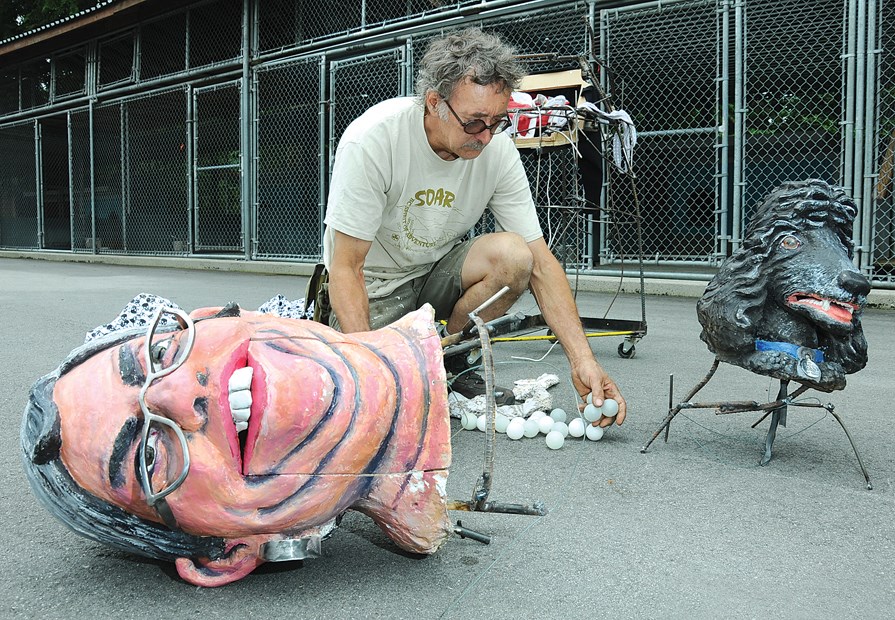An effigy targeting Capilano University's president that touched off a controversy about censorship and academic freedom has been returned to the artist who created it - albeit cut into pieces.
Studio Arts instructor George Rammell, who sculpted Blathering on in Krisendom to protest the way programs at the university were cut in a budget shortfall, won the statue back following a union grievance that concluded this week.
University board chairwoman Jane Shackell ordered the sculpture, depicting Capilano president Kris Bulcroft and her French poodle Margaux, removed from campus in May on the grounds that it constituted harassment and bullying of Bulcroft.
Rammell was less than pleased about the condition of the sculpture when it was returned.
"I was quite shocked.I could see they used an electric grinder to cut the metal frame to remove the dog and head," Rammell said. "The idea that the head of the board would be judge, jury and executioner of a censorship project - it's just not their role," he said.
Even though Rammell was confident his union's grievance process would get the piece back, he went to work on a new version last week. The ruins of the original will be incorporated into the new one, which Rammell plans to continue showing in order to tell his story, though he has agreed to not display it on campus anymore.
"Some galleries have already approached me but we'll see. I haven't made up my mind yet," he said.
While the saga has been regrettable, Rammell said the effigy did accomplish its aim.
"It really did bring a lot of attention to the issues at Cap. The work is simply a conduit to get people thinking and talking about the real problems at Cap," he said.
Shackell acknowledged, meanwhile, that Rammell has a fundamental right to expression, and that university presidents are not above criticism. But Shackell said she stands by her decision.
"It was removed because it was considered to be intimidating and humiliating to one of his colleagues. The university has a responsibility and, in fact, a legal obligation under the new WorkSafe legislation to prevent harassment and bullying in the workplace and that is what we did," she said.
Shackell said the sculpture's frame had to be dismantled in order to move the piece, though Rammell disputes that, saying he has moved it many times on his own.
The Canadian Association of University Teachers has started an investigation into whether seizing the effigy was a violation of Rammell's academic freedom. The university has so far declined to participate, which Shackell said is not likely to change.
"I don't think an appeal to academic freedom can be used to displace the university's obligation to maintain a workplace free from harassment and bullying," she said.
Shackell also questioned the integrity of the investigation, given comments already made by the association's president to the North Shore News "which suggested that he's already reached a conclusion about the subject of the investigation. I'm not sure how objective the investigation is going to be," Shackell said.



